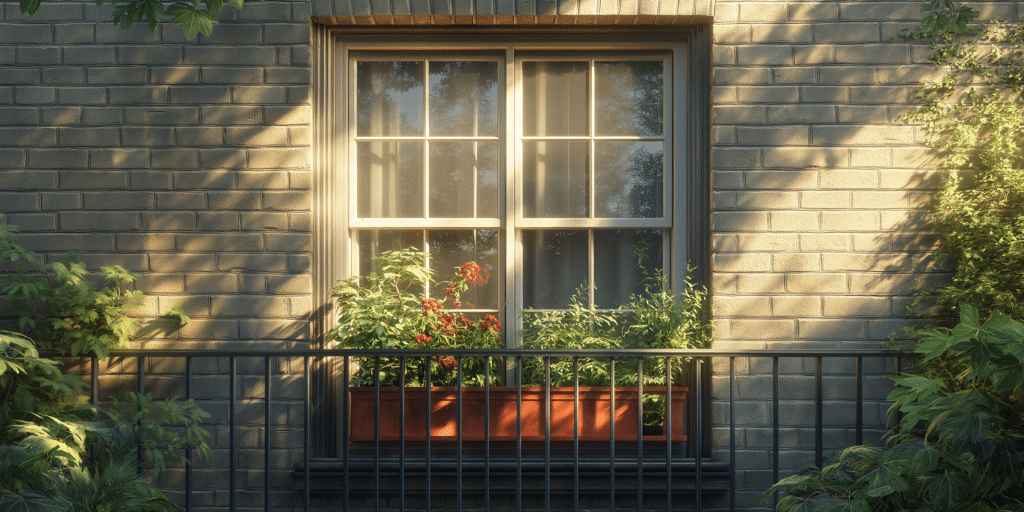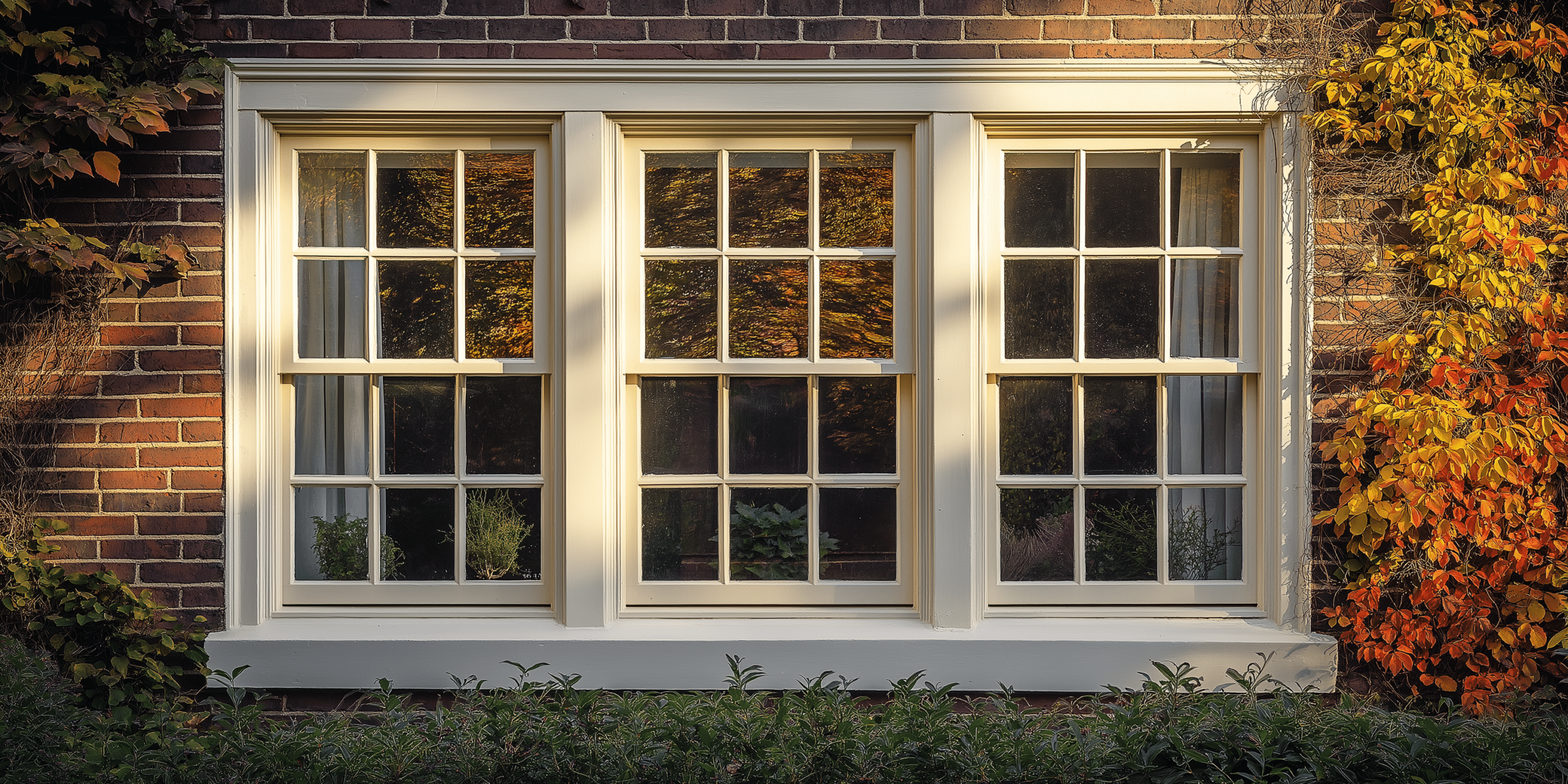What Is Sash Window Paint Priming?

Sash window paint priming is a critical first step in protecting and preparing sash windows for painting. It involves applying a primer—a preparatory coating—onto the window frame, which seals the wood and creates a smooth, even surface for the final coats of paint. Priming ensures that the paint adheres properly, prevents moisture penetration, and protects the wood from rot, decay, and warping caused by environmental exposure.
It enhances paint adhesion, ensures a smoother finish, and protects the wood from moisture damage and environmental wear. According to experts, a smooth and even surface is essential for optimal long-term performance, as multiple layers of old paint can interfere with the window’s functionality.
Priming extends the lifespan of the paint job and helps avoid common problems such as peeling, cracking, or blistering paint. Studies show that sash windows that are properly primed and painted can reduce heat loss by up to 30%, a significant factor in energy efficiency. Failing to apply primer can lead to premature paint failure and expose the wood to harmful elements, leading to costly repairs.
Oil-based primers are ideal for outdoor use due to their moisture resistance, while water-based primers work well indoors for faster drying and lower VOCs. Use low-VOC water-based primers that provide a more environmentally friendly option while ensuring protection.
Why Proper Surface Preparation Is Crucial
Proper surface preparation is essential for achieving a flawless and durable finish. Before applying primer, it’s important to sand and clean the sash window frames to remove dirt, old paint, and any rough patches. A smooth, clean surface allows the primer to bond effectively with the wood, ensuring long-lasting results.
Poor preparation can lead to uneven application, peeling paint, and reduced durability. Experts emphasise that skipping this step can cause windows to stick or become non-operational if the paint bonds improperly.
Use medium-grit sandpaper (120-180 grit) to remove imperfections and fine-grit sandpaper (220 grit) to create a smooth surface. Then, thoroughly clean with a tack cloth to remove dust. Older windows may require more delicate treatment, including low-VOC or eco-friendly primers that won’t damage the wood. Use breathable primers or linseed oil-based paint to maintain the timber’s natural flexibility and breathability.
A well-prepared surface provides better primer adhesion and a longer-lasting paint finish.
Types of Primers for Sash Windows
Choosing the right primer ensures optimal protection and durability for sash windows. Oil-based and water-based primers are widely used, but shellac-based primers are also popular for special circumstances like stain-blocking.
Because of their superior sealing and adhesion properties, oil-based primers are recommended for sash windows in high-moisture environments or areas exposed to extreme weather conditions. Wood ends and joints must be sealed with an appropriate end-grain sealer to prevent moisture penetration.
Water-based primers dry quickly, are low in VOCs, and are best suited for indoor sash windows or newer wood. Stain-blocking primers prevent tannins, knots, or previous stains from bleeding through the paint, making them ideal for older sash windows or wood with visible imperfections.
Consider the wood condition, climate, and environmental exposure—use oil-based primers for external windows and water-based or shellac primers for indoor applications.
Step-by-Step Guide to Priming Sash Windows

Priming sash windows requires a systematic approach for the best results. Follow these steps for optimal preparation and application:
- Clean the window frames: Ensure all dust, dirt, and old paint are removed from the sash window frames.
- Sand the surface: Lightly sand the frames with medium-grit sandpaper to smooth out imperfections and ensure the wood is ready for primer.
- Apply the primer: Use a high-quality paintbrush or roller to apply a thin, even coat of primer.
- Allow to dry: Depending on the primer, allow 12-24 hours for drying between coats.
Two coats are recommended for optimal coverage and protection. The primer must be applied evenly to avoid issues such as windows sticking. Light sanding between coats is essential for a flawless finish. This is especially important for older sash windows, where multiple layers of paint can prevent the smooth functioning of the sashes. Thin, even layers are best to avoid drips or uneven surfaces.
Mistakes to Avoid When Priming Sash Windows
Even the most experienced DIYers make mistakes when priming sash windows. Some of the most frequent mistakes are applying primer too thickly, failing to prepare the surface, and rushing the drying process.
- High humidity can cause the primer to dry too slowly, creating an uneven surface. Experts recommend taking note of weather conditions when planning your priming project to ensure optimal drying times.
- Skipping sanding between coats may result in a rough, uneven finish and poor adhesion for the final coat of paint.
- Priming in cold weather can prevent the primer from curing properly, which may lead to premature paint failure.
- Thick coats may not dry evenly and can lead to cracking, peeling, or bubbling of the paint.
Priming Sash Windows in Different Climates
Climate plays a major role in the priming process. In humid or coastal environments, moisture-resistant primers are crucial, while in colder regions, you’ll need a primer that can withstand low temperatures.
- Oil-based primers are ideal for coastal areas as they offer better protection against moisture, salt air, and mildew.
- However, high temperatures can cause the primer to dry too quickly, leading to poor adhesion. High humidity slows drying, while low humidity speeds up the process—use a primer suited to your local climate.
- Cold temperatures can cause the primer to become brittle, leading to premature failure.
Choosing the Right Tools for Sash Window Priming

The right tools can significantly improve the quality of your priming job. High-quality brushes, rollers, and other accessories ensure smoother application and optimal primer coverage. An angled sash brush is particularly useful for sash windows, as it allows for precision in tight corners.
- An angled sash brush makes applying primer in tight corners and along narrow profiles easier, ensuring a neat finish. According to experts, using an angled brush helps avoid overloading the brush with primer, which can result in runs or uneven coverage.
- It’s best to avoid contamination using separate brushes for oil- and water-based primers. This ensures proper application and prevents any cross-reaction between different types of primers, which could compromise adhesion or cause premature peeling.
- Use 120-180 grit sandpaper for initial sanding and 220 grit for smoothing between coats of primer. According to a study by Period Living, proper sanding increases the adhesion of primers by up to 25%, leading to a longer-lasting paint job.
- A drop cloth is essential to protect surrounding surfaces from drips or spills. Droplets of primer, particularly oil-based ones, can be challenging to remove from hardwood floors or carpets.
Priming Sash Windows in Historic Homes
Priming sash windows in historic homes requires special attention to preserve the original aesthetic while providing modern protection. Using heritage-grade primers and paints is essential for maintaining the wood’s appearance and structural integrity. Linseed oil-based primers are popular in this context, as they provide a breathable coating that doesn’t trap moisture within the wood.
- Low-VOC or eco-friendly primers are often best for these projects. A restoration expert suggests using breathable primers, such as linseed oil-based primers for period properties, to maintain the window’s longevity without damaging the wood.
- Removing old paint ensures better primer adhesion and a cleaner final look. Period Property UK advises removing old, flaking paint using non-abrasive tools to avoid damaging delicate woodwork.
- Use heritage-grade primers and paints that match the original colour and finish of the windows. This will maintain the period aesthetic and help preserve architectural heritage.
- Proper priming is essential for restoration, as it protects the wood and enhances the longevity of the new paint.
Best Practices for Applying Primer to Sash Windows
Proper technique is essential for a long-lasting finish. Always apply two thin coats of primer, lightly sanding between coats to ensure a smooth, even surface. Light sanding between coats helps the primer bond with the wood more effectively, reducing the risk of flaking or peeling.
- Two coats are recommended for the best coverage and protection. Applying two thin coats of primer ensures the wood is properly sealed and prepared for the topcoat.
- Thin coats dry more evenly, adhere better, and prevent drips or sags in the primer. A thick coat of primer can trap air bubbles underneath the surface, leading to blistering during hot weather.
- Depending on the primer type and environmental conditions, allow 12-24 hours for each coat to dry fully. Higher humidity and colder temperatures can slow down drying times, so always refer to the manufacturer’s instructions.
- Do I need to sand between coats? Yes, light sanding between coats creates a smoother surface and improves paint adhesion.
How to Extend the Lifespan of Primed Sash Windows

Regular maintenance is key to ensuring that primed sash windows last for many years. This includes cleaning your windows regularly, inspecting for damage, and touching up any peeling or cracking areas to protect the underlying wood.
Repainting every 5-7 years is recommended to maintain the protective barrier and aesthetic appeal. Experts recommend shortening this interval to 4-6 years in regions with harsh weather conditions like Scotland to prevent moisture damage.
Look for peeling paint, cracks, or signs of moisture intrusion. Maintaining proper drainage is crucial, as water trapped in joints can accelerate the decay of the wood frame.
Sand the area lightly and apply primer before repainting to ensure a smooth, durable finish.
Use a moisture-resistant primer and inspect the windows more frequently to catch any issues early.
Conclusion: Achieving the Perfect Finish with Sash Window Priming
Achieving the perfect finish with sash window priming requires careful preparation, selecting the right tools, and using high-quality primer. The priming process ensures sash windows’ longevity and aesthetic appeal, particularly for homes in challenging climates or historic properties.
Priming seals the wood, creating a smooth base for paint and protecting against moisture ingress, preventing rot and decay. By following these steps, homeowners can extend the lifespan of their sash windows by up to 50% compared to unprimed windows.




